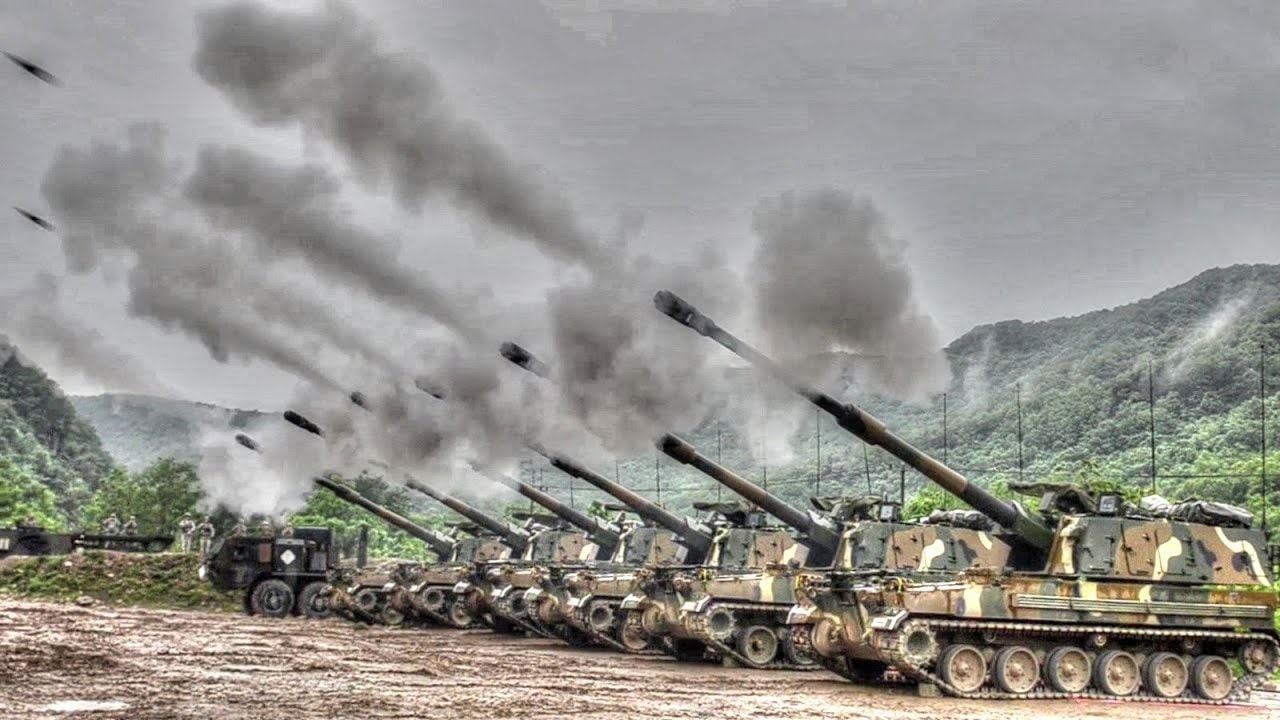South Korea Will Sell Arms to U.S. for Ukrainian Troops: A new agreement between the United States and South Korea will see South Korean manufacturers sell 100,000 rounds of howitzer artillery to the United States for use in Ukraine.
South Korea to the Ukraine Rescue
The agreement, which has reportedly been in the making for some time, will help Ukrainian forces bolster its air defense and howitzer ammunition at a time when Russian forces are becoming heavily reliant on drones and missile strikes. The news is also a welcome development for U.S. forces, given that the constant supply of weapons and ammunition to Ukraine is having a substantial impact on the United States’ own stockpiles of weapons.
The deal has not yet been made public, although the South Korean Ministry of Defense acknowledged that talks are ongoing. According to the South Korean government, the discussion centers around the manufacturing and supply of 155-millimeter artillery shells. The ministry did, however, claim that the deal was being made with the assumption that the United States would be the “end user” of the rounds, indicating that South Korea intends to supply ammunition for American use only, allowing the U.S. to supply its own ammunition in place.
This tactic has been used throughout the war as it allows countries to contribute to Ukraine’s war efforts without directly supplying weapons.
What’s Been Agreed
Defense officials confirmed on Friday that the deal was specifically designed to relieve the pressure on American stockpiles, particularly for howitzer ammunition. Ukraine has used huge quantities of howitzer ammunition, with more required to deal with a bombardment of Russian-Iranian kamikaze drone strikes.
According to a senior U.S. defense official, Russia is currently using 20,000 artillery rounds against Ukrainian positions every day, and Ukraine is burning through between 4,000 and 7,000 rounds per day.
“Ukraine still needs a significant amount of artillery going forward. Consumption rates in this war are very high,” the official said.
While the South Korean deal will help relieve this pressure, 100,000 rounds of ammunition will only last so long. If current trends continue, South Korea’s supply of ammunition – whenever it may arrive in Ukraine – could last anywhere between 14 and 25 days.
South Korea Helps Ukraine, North Korea Helps Russia
In early November, the United States accused North Korea of secretly supplying artillery shells to Russian forces in Ukraine. According to U.S. intelligence, North Korean shipments were disguised as ammunition shipments to North Africa and the Middle East. However, the equipment has reportedly been arriving in Russia and Ukraine.
“In September, the (Democratic People’s Republic of Korea) publicly denied that it intended to provide ammunition to Russia,” National Security Council Coordinator for Strategic Communications John Kirby said.
“However, our information indicates that the DPRK is covertly supplying Russia’s war in Ukraine with a significant number of artillery shells, while obfuscating the real destination of the arms shipments by trying to make it appear as though they are being sent to countries in the Middle East or North Africa.”
Jack Buckby is a British author, counter-extremism researcher, and journalist based in New York. Reporting on the U.K., Europe, and the U.S., he works to analyze and understand left-wing and right-wing radicalization, and reports on Western governments’ approaches to the pressing issues of today. His books and research papers explore these themes and propose pragmatic solutions to our increasingly polarized society.

